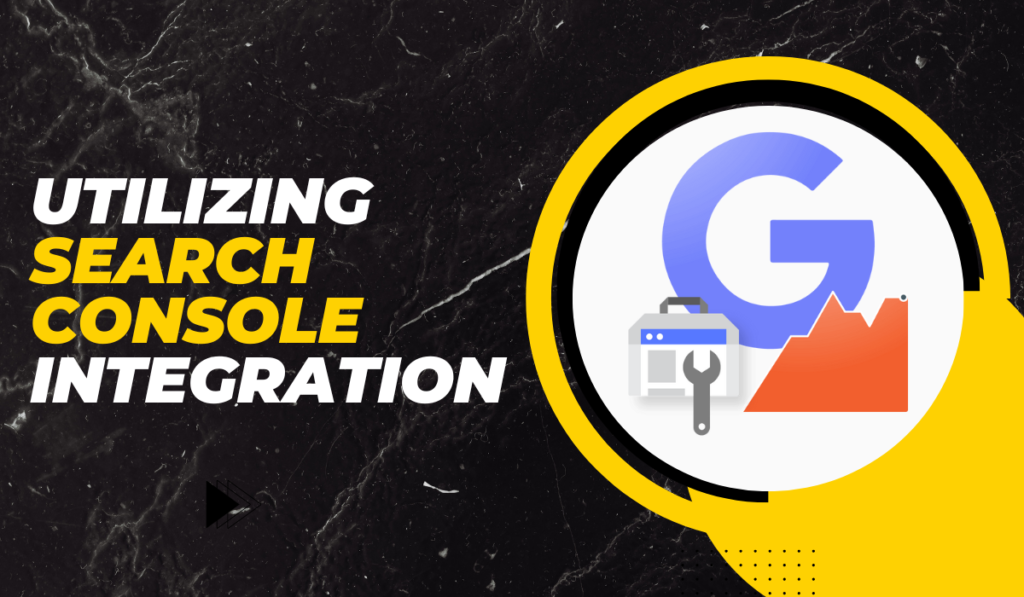
Google Analytics 4 (GA4) is the latest version of Google’s leading analytics platform. GA4 introduces valuable SEO capabilities for understanding and enhancing site visibility within Google Search. As SEO practices evolve, leveraging GA4 helps unlock deeper insights on enhancing rankings, optimizing content, improving site architecture, and competing within niches. Given that organic search remains a vital channel for customer acquisition, implementing GA4 analytics paves the way for a bigger SEO impact overall.
Unlike previous iterations, GA4 brings enhanced attribution, granular reporting, and machine learning integrations purpose-built for 2022 SEO analysis needs. Key capabilities include channel analytics with improved site search/referral source modeling, core web vitals tracking, content drilling paths revealing user flows, omnichannel conversion data, and integrated queries showing actual user search terms used for site landings. Article-level analytics empower better targeting and personalization, too. When layered, these next-gen data points guide more informed SEO experimentation, hypothesis testing, and optimization at scale. They unlock growth opportunities otherwise missed when relying only on past versions of Google Analytics.
Setting Up Google Analytics 4 for SEO
Creating a Google Analytics 4 property
The first step is to create a dedicated GA4 property for your website within your Analytics account. When prompted, ensure to toggle that the property will be used for SEO reporting needs. Select web as the app type to analyze. Enable data retention for at least 14 months to allow sufficient historical tracking. During property creation, turn on features like backlink counts, crawl stats connectors, and parameter tracking.
Installing tracking code on your website
Once the property is created, Google provides a unique measurement ID and snippets of tracking code to install. Add the GA4 gtag.js tracking code across every site page for comprehensive data collection. For WordPress sites, Google’s official plugin can handle implementation seamlessly. Verify that the code is live through Google Tag Assistant or preview mode.
Configuring data streams for website and app tracking
Within the GA4 property, the next task is configuring data streams for tracked assets like websites, mobile apps, etc, along with appropriate filters and exclusions. Set up a web stream to import all hits from tagged site pages. Enable server-side streams for CMS platforms needing it. Create additional streams for any Android/iOS apps needing tracking. Funnel top-intent traffic into the default stream. Adjust streams accordingly as the site structure evolves.
Understanding Key Metrics for SEO in Google Analytics 4
The main SEO traffic metric is total organic search visits segmented by keyword, landing page, geographic source, and other cuts. Compare overall organic users and new users over key periods. Check assisted conversions driven by organic against other channels. Monitor click-through rates on rank tracker tool data. Identify landing pages attracting high search volumes already as optimization targets.
Engagement metrics like bounce rate and time on page/site reveal content quality. Look at the lowest exit and landing pages with ultra-high bounce rates (>80%) for diagnostics. See topics/categories that reliably engage visitors by enough relative session duration. Visitor loyalty metrics highlight your site’s ability to encourage repeat visits.
Configure micro and macro conversion goals in GA4 that align with your sales funnel – like email signups, downloads, purchases, etc. Check goal conversion rates specific to organic traffic for performance benchmarks. See revenue directly attributed to organic. Connect to e-commerce platforms through partner extensions to unlock fuller conversion data and order analytics. Prioritize ranking goals for URLs driving the most conversions.
Utilizing Search Console Integration

Within the Admin section of GA4, navigate to Data Streams and enable the Search Console connector. Input your verified Search Console property URL to authorize API linkage. This imports key data like impressions, clicks, positions, queries, etc., from Search Performance reports into GA4 for unified analysis.
Under Acquisition reports, the new Queries segment shows actual search terms used to land on your pages. The Landing Pages report reveals corresponding URLs ranked for each query. Examine click-through rates for target keywords vs. impressions. Check queries with high clicks but low conversion rates needing optimization. Identify potential ranking gaps for commercial queries by volume.
The integration helps uncover SEO opportunities like:
- Improving rankings for high-traffic queries
- Increasing CTRs for pages getting lots of impressions
- Optimizing specific landing pages around associated keywords
- Targeting keywords aligned to conversion goals
- Creating new content for unranked but relevant queries
Syncing Search Console data into GA4 provides a crucial feedback loop for initiatives around content development, technical SEO, backlinks, and greater keyword visibility.
Analyzing Content Performance
Under Content Grouping within GA4 Admin Settings, categorize site pages according to an optical HTML content taxonomy. Group product, support, and campaign pages separately. Map to existing navigation structures for readability. By rating groups on business value for prioritization and assigning owners, this content hierarchy powers better optimization collaboration cross-functionally.
Having categorized all site pages, GA4 reporting can segment landing page performance by the defined content groups and types. Check pages and sections driving the most organic traffic/conversions to diagnose why they rank well. Identify any outlier pages that over/underperform for their assigned group based on metrics like time-on-page. Review characteristics of high-ranking pages worth replicating.
The segmentation also highlights content areas seeing insignificant organic traction today, but that are relevant to your industry. Isolate unoptimized pages around valuable commercial terms that have yet to be keyword-targeted sufficiently for potential ranking wins. Review site searches without results and 404 errors to discover needed content additions through new guides, categories, or FAQs around sought-after topics engaging visitors. Address shortfalls through revised production workflows accounting for SEO value during the content plan.
Leveraging Event Tracking for SEO Insights
Beyond page views, implement event tracking in GA4 to capture finer user interactions like button clicks, file downloads, video views, etc. Assign event categories, actions, and labels to isolate events by type and pages on which they occurred. This reveals content elements and features resonating for each section while quantifying engagement qualifying leads.
Connect events to landing pages, their affiliated keywords, and on-page content topics. Identify terms that drove exceptionally high download rates for gated assets, signaling relevance. Optimize pages further for those productive keywords and subject areas through content expansion, schema markup, etc. Feature certain topics more prominently across your site’s global navigation and IA, given their penchant for inducing conversions.
Funnel analysis of successive events unveils friction in user flows before goal achievement. Find paths where visitors bounced before converting to diagnose readability, technical obstacles, or confusing IA redirecting users incorrectly. Refine page messaging, layouts, and cross-linking for streamlined access to the next conversion steps. Fixed paths see lifts in conversion rate and reduced exit rate. Event sequencing reveals UX weaknesses for SEO yet often needs event implementation.
Implementing Custom Dimensions and Metrics
Create custom dimensions tailored to your site’s content taxonomy and SEO data needs within the property settings area. For example, define author and content type and focus on keyword dimensions for assigning to specific pages and content creators moving forward. This facilitates richer filtering of reports later by these attributes.
Once custom dimensions are defined in GA4, update the site code to set dimension values on the page load. Set the author name, page type, and target keyword to enable better segmentation by these factors tied to rankings and engagement. Custom metrics can also track potent SEO metrics manually, like keyword difficulty, page authority, or first-page estimates.
Now, GA4 reporting can break down metrics by delivery channel, geo, and device and define custom dimensions. See which authors produce the most compelling content that converts and ranks organically. Check types that excel based on goal conversion rate. Assess sites/apps where engagement and conversion performance of the same content excels or lags. Isolate highest-value pages abandoning visitors to rectify urgently. Custom data signals guide smarter SEO prioritization and hypotheses for optimization experiments.
Creating Custom Reports and Dashboards
Building custom reports for SEO analysis: Leverage the custom report builder in GA4 to compile specialized reports tailored to your SEO analysis needs. Build reports specifically tracking organic landing page conversion rates, bounce rates for priority keyword pages, site search queries without results, rankings by geo, or other facets vital for initiatives. Properly name reports for findability and set automatic email delivery to stakeholders for ongoing monitoring.
Setting up dashboards for quick insights – To enable rapid scanning, construct custom GA4 dashboards containing important organically segmented metrics to watch. Populate with graphs on overall organic trends, goal conversions, and value from organic, clicks, and CTR by keyword groupings, pages, and sections attracting visitors from search, etc. Pull filterable list reports of landing pages into the same dashboard for diving deeper into underlying keywords and user flows.
Sharing reports and dashboards with stakeholders – Tap into the collaboration features within GA4 to add teammates, specify user levels, and selectively share access to developed SEO reports and dashboards assisting with respective duties. This helps socialize key data, like content gaps, technical obstacles, author performance, etc., as action items with the right staff to drive progress across mandates.
Automated GA4 SEO reporting centralizes insights, priorities, and necessary data for search visibility roles while aligning wider teams.
Optimizing SEO Strategies Based on Data
Iterative improvement based on data analysis – GA4 reporting enables continually refining SEO through measured insights versus guesswork. Review analytical findings on monthly schedules to spot trends and iterative opportunities. Revisit assumptions around highly performing areas worth additional investment vs. overestimated facets underdelivering internally. Have a feedback loop linking SEO insights to strategy and content development.
Testing hypotheses and monitoring outcomes: Leverage the data to form hypothesis tests of SEO experiments across variables like pages, keywords, authors, content topics, and layouts. Track engagement and conversions diligently for sample groups exposed to optimizations like added media, lengthier copy, synonyms, etc. Compare performance between control and test groups to determine the significance of wider rollout.
Adjusting SEO tactics for better performance: Let the numbers guide smarter Search optimization, not vanity metrics. Double down on aspects generating clicks, traffic quality, and conversions. Switch off inefficient efforts like outdated link-building sites or overdone keywords that cannibalize themselves in rankings. Have the confidence to make changes and site migrations supporting long-term visibility through GA4 testing, proving the way forward based on field data from your current audience.
Staying Updated with Google Analytics 4 Features
Keeping track of new features and updates – As a rapidly evolving product, Google Analytics 4 frequently adds beneficial features and tools. To stay current, subscribe to Google’s analytics blog and help center content feeds. The following developments were announced at the annual Google Marketing Live and Google I/O developer events, tying GA4 to SEO. Check release notes and guides in the GA4 interface for the latest updates.
Incorporating new tools and capabilities for SEO analysis – When compelling updates launch, like expanded channel reports, goal optimization tools, or custom funnel visualizations – evaluate applicability to your SEO analysis needs. Test betas of capabilities that can uncover more data, improving your rankings and traffic acquisition efforts. Surface new insights by leveraging new metrics now available.
Continuous learning and skill development in analytics: The skill to leverage Google Analytics 4 for unlocking SEO growth opportunities requires continual learning. Refresh best practices by retaking courses as products progress. Stay acquainted with updates through Google’s analytics certification programs, online skill shops, or expert-led training. Invest in developing in-house analytics prowess across SEO and marketing teams through technical capability building to extract intelligence from the expanding GA feature set.
Ongoing education around Google Analytics 4 ensures your SEO strategy capitalizes on the latest tools, surfaces emerging insights, and consistently evolves performance.
Conclusion
This guide covered crucial aspects of implementing Google Analytics 4 to elevate SEO performance through acute data analysis. We discussed:
Configuring GA4 properties and connectors: Creating dedicated GA4 properties with appropriate attribution and conversion tracking linked seamlessly to other analytics data sources like Search Console delivers that ‘single source of truth’ for analysis. This unified hub strategy powers tying rankings to user behavior insights easily.
Leveraging vital SEO metrics: GA4 unlocks next-level segmentation across organic goals funnels. We can quantify engagement, loyalty, and conversions specifically from search channel landings. Metrics on rankings visibility, featured snippet wins, and local pack impressions spotlight SEO capability gaps needing work or teams to bolster through expansion.
Building custom reports and dashboards: Savvy search marketers construct customized GA4 reporting catered to business goals – focused around return-driven priorities like increasing category share, Conversion Rate for commercial keywords, or content consumption for informational quests. Tailored reporting better informs resource allocation and site experience iteration.
Testing and validating SEO hypotheses: The power of GA4 guides us to formulate an insightful hypothesis, set up proper test/control groups, and then measure outcomes through matched user segments. This scientific SEO process helps us double down on what works and switch off what doesn’t. We can continually enhance page speed, on-page authority factors, and content freshness according to measured impacts on visitor retention.
Data-backed SEO converts better through systematically optimizing against key objectives until reaching them through documented lifts in rankings, traffic, and revenue over baselines. Rather than periodic good fortune, sustainable careers stem from leveraging tools stitching together performance pixels into an irrefutable trajectory towards goals.
If you still need to begin, explore Google Analytics 4, which is tailored specifically to your team’s search analytics needs. Leaning into the tool and skilling up personnel to match competitor capabilities will unlock immense potential. Allow fresh GA4-powered insights to help advance or pivot SEO roadmaps to what users verifiably care about based on qualified traffic. Its enterprise-level rigor applied at a compartmental scale repeatedly yields better search outcomes.

